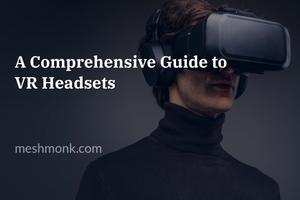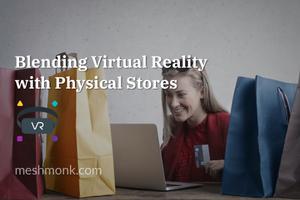Virtual Reality Ecommerce: A New Frontier in Shopping Experience
Virtual Reality, a cutting-edge tool promises to redefine the ecommerce sector, effectively bridging the gap between online shopping and physical retail experiences. From heightening customer engagement and driving conversion rates to reducing return rates and advancing product visualization, VR brings a myriad of benefits to the table.‘
What is Virtual Reality?
Virtual reality (VR) is an immersive digital technology that simulates a user’s physical presence in a virtual or imaginary environment. This technology uses computer-generated simulations to create a three-dimensional environment with seemingly real interactions. In this simulated reality, users can explore and manipulate their environment, as well as interact with virtual features or items.
Did you know that the concept of virtual reality was popularized by science fiction, notably in the 1982 classic film ‘Tron’?
Benefits of Virtual Reality in Ecommerce
The application of virtual reality in ecommerce opens a new dimension in online shopping. VR enables retailers to provide an immersive, interactive experience that closely resembles in-store shopping. Here are a few benefits:
- Enhanced Customer Engagement: VR provides a unique, engaging shopping experience that can result in improved customer loyalty and retention.
- Increased Conversion Rates: The interactive nature of VR can help increase conversion rates, as customers can ‘try’ products before they buy them.
- Reduced Returns: With VR, customers can have a better sense of the product, which can potentially decrease the return rate.
According to a study by Grand View Research, the global VR market size is expected to reach $62.1 billion by 2027.
Virtual Reality and Product Visualization
One of the main advantages of virtual reality in ecommerce is its potential for product visualization. VR allows customers to visualize and interact with products in a three-dimensional environment. This means customers can ‘try on’ clothes, view furniture in their own home, or even ‘sit’ in a car before making a purchase decision. By providing a true-to-life representation of products, VR enhances customer confidence, potentially leading to increased sales.
IKEA was one of the first brands to adopt VR for product visualization with their IKEA VR Experience app, which allowed customers to virtually remodel their kitchen.
Virtual Reality and Personalization
In addition to product visualization, virtual reality can also provide personalization in ecommerce. VR technology can be utilized to create personalized avatars or virtual shopping assistants, guiding customers through their shopping journey. The personalization potential of VR also extends to customized product recommendations, virtual fitting rooms, and even personalized store layouts, further enhancing the shopping experience.
Future of Virtual Reality in Ecommerce
The future of virtual reality in ecommerce looks promising. With advances in technology and increased consumer acceptance, VR is set to revolutionize ecommerce. Future applications could include fully immersive virtual shopping malls, further advancements in product visualization, and even the integration of VR with other technologies such as artificial intelligence (AI) and augmented reality (AR)
According to Gartner, 100 million consumers will shop using AR online and in-store by 2022.
Conclusion
Virtual reality is poised to transform ecommerce, offering retailers a new way to engage customers, visualize products, and personalize the shopping experience. While VR in ecommerce is still in its early stages, its potential benefits are clear. As technology advances, we can expect to see even more innovative applications of VR in the ecommerce sector.




